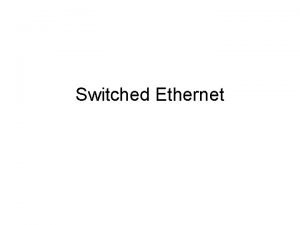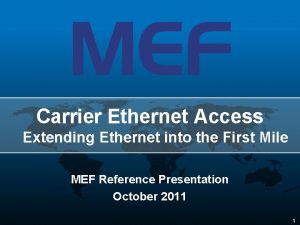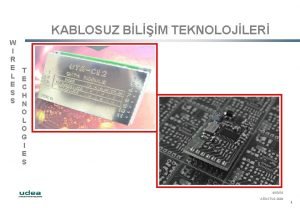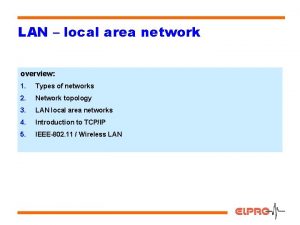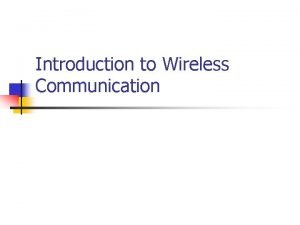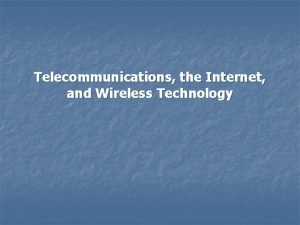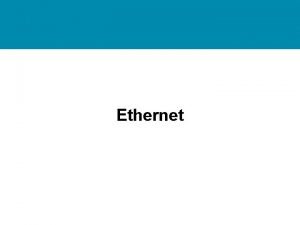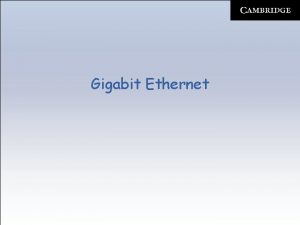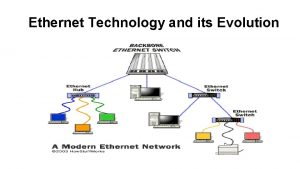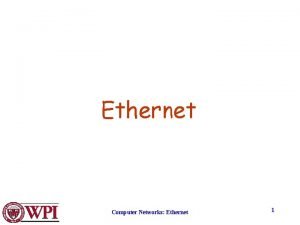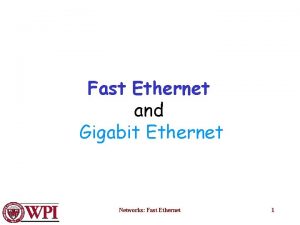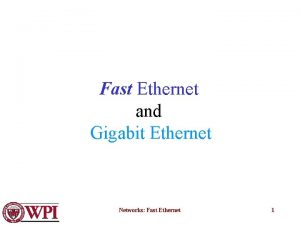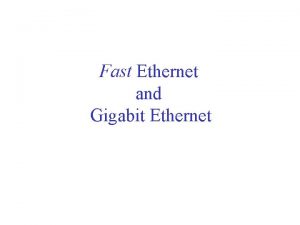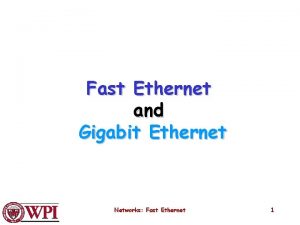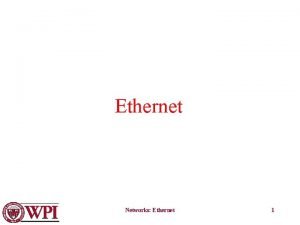Wireless Ethernet Technologies Wireless Ethernet Technology Industry technologies













- Slides: 13

Wireless Ethernet Technologies

Wireless Ethernet Technology Industry technologies & market trends Choosing the right radio technology for the job Why there is no “one size fits all” in wireless world Determining the correct frequency for the job Slow speeds vs. fast speeds Interference and Security Ease of installation

Backhaul, Multiple Access, Cellular and Mesh Wi-Fi Multiple Access solutions are optimized to support several simultaneous device as mobile locations. Great for surfing. Bad for video. Typically 2. 4 GHz. Backhaul solutions are optimized for fixed point to point connections. Longest range and highest success rates. Typically 900 Mhz or 5. 8 GHz. Fixed Multiple Access solutions are optimized to support several simultaneous device as fixed locations. Great for surveillance applications. Typically 5. 8 GHz. Cellular systems are versatile but require monthly fees. They are relatively inexpensive to buy and install. Specialized radios with high quality antennae at elevated locations have best success. Populated venues often have throughput issues. Various licensed frequencies used. Mesh systems require high radio node density. They are relatively expensive to buy and install. Smaller node counts have better success and higher throughputs. Typically 5. 8 GHz.

How far will the link go?

Mesh and Spoke

What are the ACTUAL data requirements? LAN extension at 100 Mbps? H. 264/MPEG 4/JPEG Mega. Pixel Video at 2+Mbps/camera? Internet/NVR viewing at uplink speeds? Access Control or PTZ data at 9600 bps? Are there network bottlenecks or limits in the system? DSL/Cable/T 1/Cellular/Satellite/WLAN

Slow Speed vs Range vs Channel Width Long Range Modest Speed More Channels (intelligence) Interference Agile 1. 5 Mhz 10 Mhz Fast Short Range High Speed 20 Mhz Few Channels (stagnant) Interference prone

How does the data rate change with distance? AW 900 systems at a 30 mile link are only affected by the added 3% speed of travel delay. AW 58100 systems at a 30 mile link will have a 75% data reduction due to slower coding gain required to achieve distance.

How is security handled? AES keyed encryption – FIPS 197/140 -2 Encryption at the application layer HTTPS is becoming a preferred technique for sensitive communications.

Robust against interference? How does the system handle interference? In band out of band? How easy is the system to intentionally jam? Is the system able to autonomously coexist or be remotely managed? Is a truck roll required to perform a site survey or change channel ?


How to provide lightning protection? Ava. LAN’s antennae are DC grounded. However, the use of inline lightning suppressor is always a good idea. Mount the antenna at least 3 ft from the top of a grounded pole

Thank you! www. Ava. LANwireless. com Sales Support - sales@Ava. LANwireless. com support@Ava. LANwireless. com (866)533 -6216 (650)384 -0000
 Switched ethernet vs shared ethernet
Switched ethernet vs shared ethernet Microwave technologies for carrier ethernet services
Microwave technologies for carrier ethernet services Telecommunications, the internet, and wireless technology
Telecommunications, the internet, and wireless technology Integrated wireless technologies
Integrated wireless technologies Udea ısıtıcı
Udea ısıtıcı Wireless telecommunications industry analysis
Wireless telecommunications industry analysis A type of wireless local area network technology
A type of wireless local area network technology Advantages of wireless communication
Advantages of wireless communication Telecommunications, the internet, and wireless technology
Telecommunications, the internet, and wireless technology E commerce architecture and technologies in web technology
E commerce architecture and technologies in web technology Gmail
Gmail Hospitality technology systems
Hospitality technology systems What is pressing in garment industry
What is pressing in garment industry Classic ethernet physical layer
Classic ethernet physical layer
